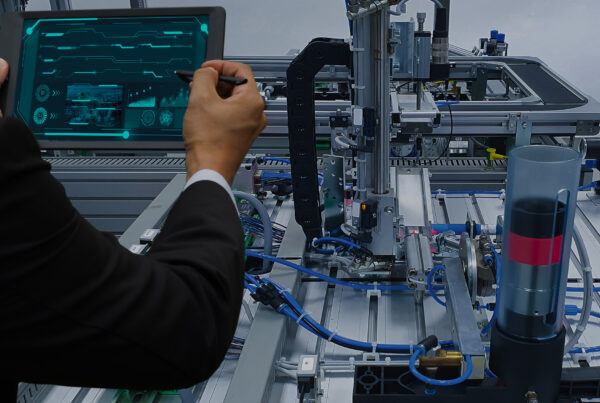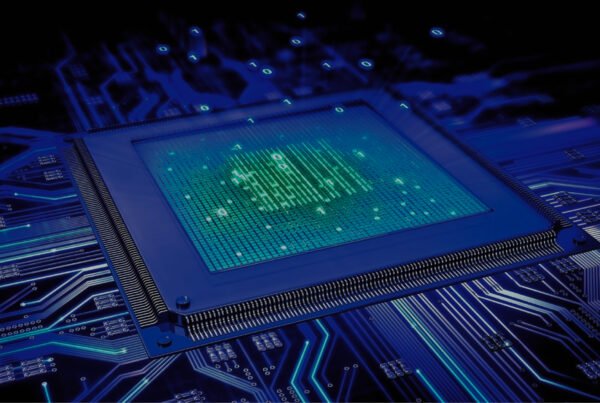As the semiconductor and electronics industries race to meet the demands of shorter innovation cycles and tighter product development timelines, traditional test engineering workflows are being reimagined. The rise of hyper-automation – the synergistic convergence of Robotic Process Automation (RPA), Artificial Intelligence (AI), and test automation – is transforming Automated Test Equipment (ATE) operations. This next-gen approach delivers not only improved efficiency but also reduced costs and enhanced quality in test engineering and management.
This blog explores how integrating these technologies is revolutionizing the ATE ecosystem, paving the way for a smarter, self-evolving testing environment.
What is Hyper-Automation?
Hyper-automation refers to the application of advanced technologies, including AI, Machine Learning (ML), and RPA, to automate processes in ways far more impactful than conventional automation. Unlike traditional approaches that rely on static, rule-based scripts, hyper-automation is dynamic – it learns from data, adapts to changes, and improves with each iteration.
In ATE workflows, hyper-automation unites:
- RPA for repetitive task automation such as test scheduling, equipment configuration, and reporting
- AI/ML for anomaly detection, predictive maintenance, and advanced data analysis
- Test automation frameworks for dynamic test execution and validation
Together, these elements create a smart testing environment capable of meeting complex semiconductor design requirements.
Get in touch
Challenges in Traditional ATE Workflows
Despite being the backbone of semiconductor testing, conventional ATE workflows come with several limitations:
- Manual interventions: Configuration and debugging still depend heavily on human involvement
- Limited intelligence: Test scripts do not learn from data; issues must be re-analyzed manually
- Scalability constraints: Increasing volumes often lead to higher costs
- Siloed systems: Data is fragmented across tools, making end-to-end visibility challenging
To overcome these challenges, test engineering requires more than basic automation – it needs intelligence and orchestration, which hyper-automation delivers.
How Hyper-Automation Enhances ATE Workflows

1. Robotic Process Automation (RPA) for Operational Efficiency
RPA bots excel at handling repetitive administrative tasks in ATE, such as:
- Setting up test benches
- Triggering scripts and switching between scenarios
- Logging, formatting, and uploading results to dashboards
- Preparing compliance reports
This significantly reduces time spent on non-engineering work, enabling skilled teams to focus on innovation and problem-solving.
2. AI & ML for Predictive and Prescriptive Intelligence
AI adds a cognitive layer to ATE workflows. By integrating ML algorithms, systems can:
- Identify defects early through data pattern analysis
- Recommend test case optimizations
- Predict equipment failures and test outcomes
- Perform root-cause analysis using historical data
This shift testing from a reactive process to a proactive, insight-driven approach – critical for high-reliability sectors such as automotive and aerospace.
3. Test Automation for Adaptive Validation
While automation has long been part of test engineering, its combination with RPA and AI makes it far more adaptive. For example:
- Test scripts can self-adjust based on DUT (Device Under Test) characteristics
- Regression suites can be optimized to avoid redundant testing
- Intelligent coverage metrics can shorten time-to-validation
These advancements streamline both pre-silicon and post-silicon testing across industries.
Benefits of Hyper-Automation in ATE
By combining RPA, AI, and test automation into one seamless workflow, engineering and testing solutions can deliver:
- Higher first-pass yield (FPY) through intelligent defect prediction
- Increased ROI by automating labor-intensive processes
- Improved compliance and traceability with auto-documentation and audit trails
- Scalability across high-mix, low-volume and high-volume environments.
Key Use Cases Across Industries
- Semiconductor: Predictive binning, parametric test optimization, yield enhancement
- Automotive: Functional safety validation, ECU testing, test case prioritization
- Telecom: Protocol conformance testing, interoperability automation
- Consumer Electronics: Automated regression testing, OTA firmware validation
With increasing complexity in chip design and integration, hyper-automation is rapidly becoming a necessity rather than a choice.
Tessolve’s Hyper-Automation Vision
Tessolve recognizes that the future of test engineering lies in intelligent orchestration. Our end-to-end test engineering services are designed to embrace hyper-automation and deliver smarter outcomes.
From test strategy design to ATE deployment and analytics, our solutions incorporate:
- AI-powered defect classification tools
- RPA-driven automation for test program generation and equipment setup
- Scalable test automation frameworks for digital, analog, and mixed-signal ICs
- Advanced analytics dashboards for real-time insights and predictive diagnostics
With over two decades of leadership in semiconductor test solutions, Tessolve is pioneering the integration of engineering rigor with next-gen automation technologies. Whether optimizing legacy systems or building smart test infrastructures from the ground up, our experts help you innovate faster, reduce costs, and enhance product reliability.
Also Read: The Future of Test Engineering: How Automation is Changing the Game
Let’s Sum Up
The integration of RPA, AI, and test automation into ATE workflows is a significant step toward intelligent, autonomous validation systems. Hyper-automation is not just about accelerating testing – it’s about enabling smarter decisions, improving quality, and optimizing engineering resources.
With Tessolve, organizations can confidently transition to hyper-automated testing environments and realize the full potential of digital transformation in engineering.





